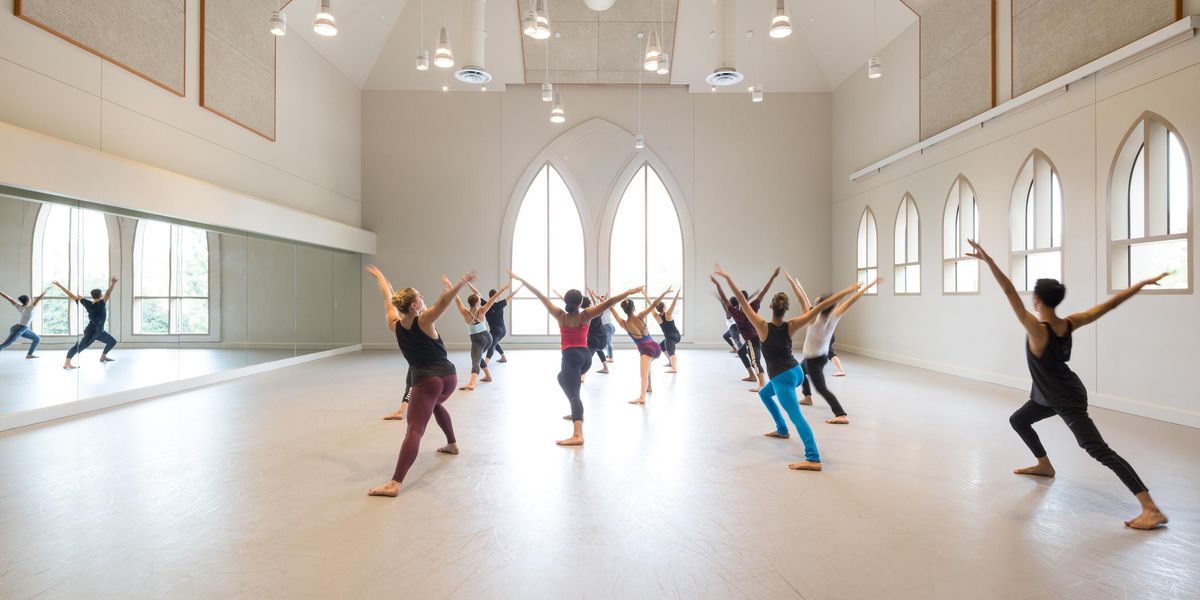Why I Choreograph: Cynthia Oliver
Cynthia Oliver’s fierce and funny duet
Boom! was a highlight of the “Parallels” platform at the Danspace Project last spring. Her dance-and-talking pieces, drawn from Caribbean, African, and American influences, have been performed around the country. Hailing from the Virgin Islands, she has performed with Ronald K. Brown, David Gordon, and Bebe Miller and earned her Ph.D. in performance studies from New York University. The author of Queen of the Virgins: Pageantry and Black Womanhood in the Caribbean, she’s a professor at the University of Illinois at Urbana-Champaign. She teaches dance technique, composition, performance, post-colonial and feminist theory, and courses emphasizing the African-American and African-Caribbean influence on American performance. Here Oliver addresses why she choreographs.
I have asked myself this very question.
When I walk into the studio for the first time. When I am in the midst of making and everything feels like a mess. When I doubt whether or not I am capable, despite awards, funding, however much recognition I do or don’t receive, fabulous opportunities that arise, beautiful reviews—and of course the bad ones. When I realize time and again that the choreography is only one part of the dance-making process. When I have to coordinate all of those other parts with the rest of my life. I have often asked myself, “Why do I do this to myself?” As though it is some divine torture. Inevitably I come to the conclusion that it is. I have chosen this form and it has been so good to me. I have toured the globe with it, gotten jobs with it, stayed in shape with it, had immense fun with it. And yes, been chastened by it. I have chosen to communicate through this form that involves body and, for me, words, sound, song, and breath. And I want it to move people.
Choosing choreography was neither immediate nor a “natural” thing for me. As a young dancer I wanted solely “to be a choreographer’s instrument.” I wanted to dance without the responsibilities of the composition of the evening, of coordinating the other performers, or logistics that surround the dance itself. And I had a great career doing exactly that.
However, as a seasoned performer, I began considering a larger politic around the relationship between dancers, choreographers, and the field itself, and I began to reconsider my relationship to dance-making. I wanted to be in this for the long haul. I wanted to contribute to this field, to offer another voice, to incorporate elements of my background of growing up in the Caribbean, of womanhood, of a black middle class, of rich lives that could perhaps alter a perspective on not just dance but our collective life experience.
I began looking at my choices. My first work I created at the invitation of my dear friend Vernon Reid, who curated an evening at the Public Theater in New York City. I named it At a Loss, because I was. Despite studying composition and having worked with incredible artists, I had little confidence. But I made something. A few years later, I was part of a collective of women who presented work at P.S. 122. My work was critically highlighted and Mark Russell, the director at the time, strongly suggested I make an evening-length piece. His suggestion scared me so much that I avoided going to P.S. 122 for a while. Eventually I returned and I agreed, and that evening-length work won a Bessie (New York Dance and Performance Award). I was launched.
It didn’t mean I had any more confidence, but I had garnered some attention and some trust, and decided to choreograph despite my fears, insecurities, and the rest. In fact, I decided to make the work about those very qualities that make us so human. This mission, to look at cultural, social, environmental, gendered, classed, racial, and other conditions that make us who we are—vulnerable, erroneously confident, humorous, ridiculous—is why I do this. Because no other practice can bring that very message home—how human we are—than the body. And for me that means choreography.
BOOM! at Danspace Project in NYC. Photo by Julieta Cervantes, Courtesy Oliver.




